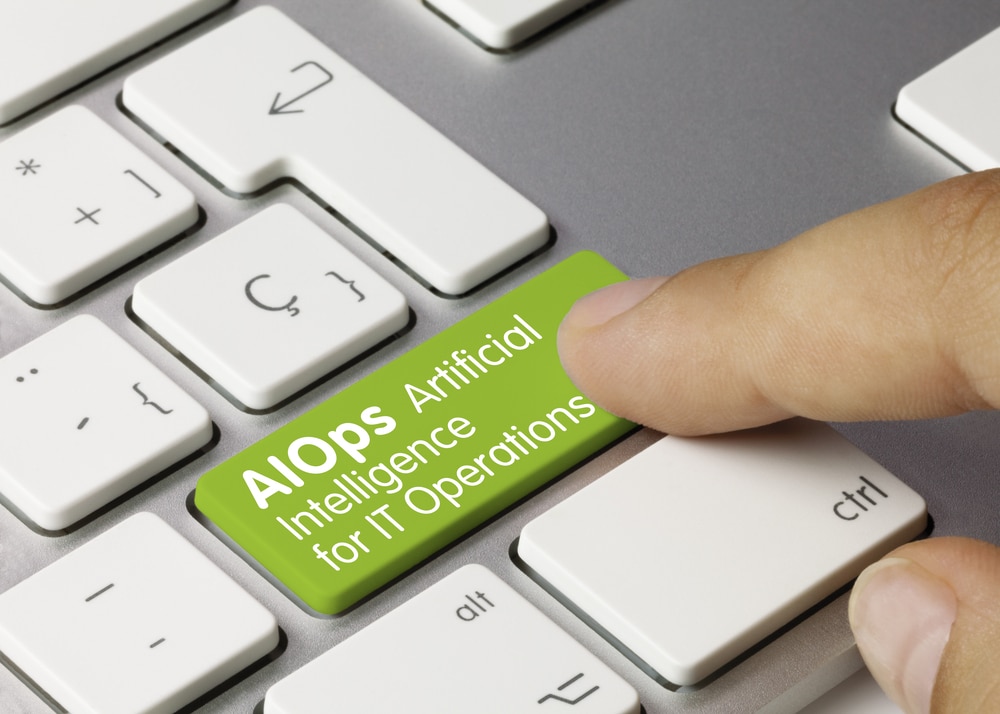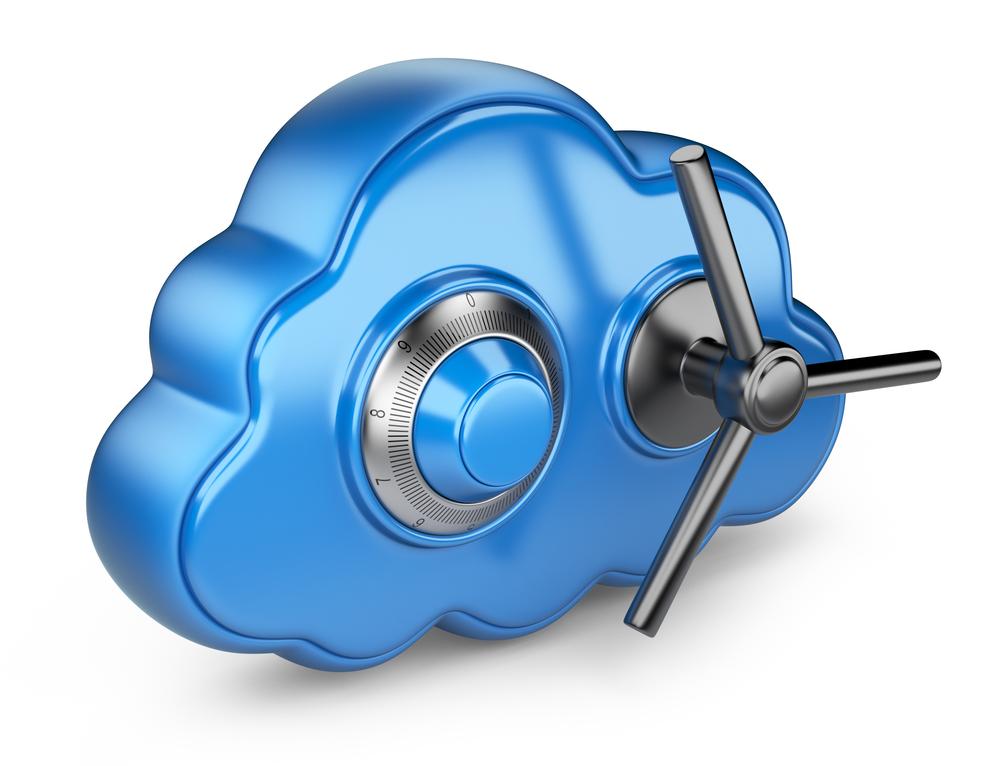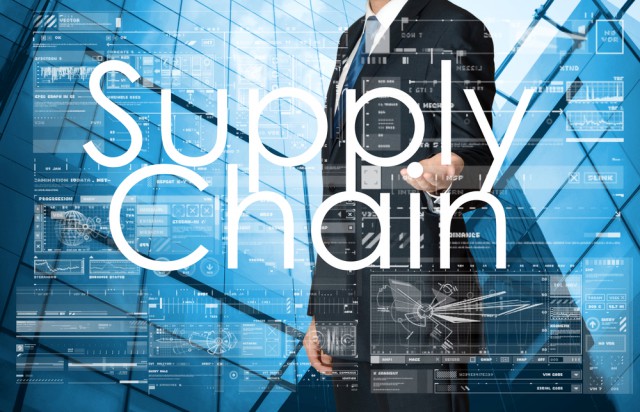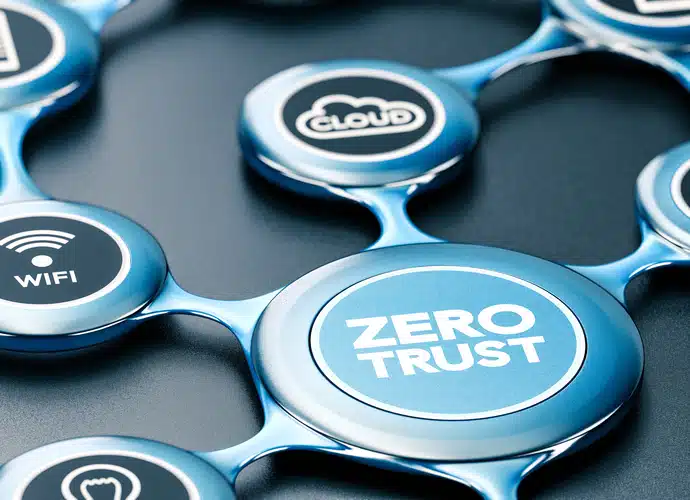
AIOps of the future: Building confidence in your brand
Technology dominates just about every sphere of modern-day society. If you are like most, you see it in your everyday lives. We increasingly buy online, with U.S. retail e-commerce sales now totaling $768 billion. Likewise, we increasingly work online, with 58 percent of Americans, or 92 million people, now telecommuting at least once a week.
For the most part, online consumers and remote workers take the technology behind their personal and professional activities for granted. We need groceries, so we open a grocery app, fill our virtual carts, check out and -- voilà -- the order is at our door in just a few hours. We apply the same expectations to remote work tools and, well, just about every technology we encounter throughout the day. It should just… work.

Cloud security is complex -- but most vulnerabilities fall into three key categories
With most enterprises leveraging at least one type of cloud deployment today, the question arises: is the cloud more or less secure than on-premise solutions?
The reality is that for on prem or even private cloud environments, the approach to security largely relies on a barrier defense. When organizations are compromised within this barrier, it can basically become open season for malicious actors, which we’ve seen in marquee incidents such as the Target data breach, the Home Depot hack in 2014, or the recent Uber breach, which exploited an unpatched security vulnerability.

How technology investment could be the savior for businesses
It’s hard to hide from the doom and gloom messages that are encircling the world around economic uncertainty but despite this, business and technology leaders still have a job to do -- and with 2022 coming to a close, 2023 planning must be approached with a growth mindset.
As much as it may seem counterintuitive to spend in times of financial uncertainty, those businesses that make rash decisions to tighten the purse strings and reduce technology investment, may just be the ones that end up being left behind.

Resiliency through visibility: Why supply chain disruption needs to be tackled by a holistic approach
A host of 'black swan' events have hit companies’ supply chains over the past two years, straining existing processes and structures. Beyond the obvious impact of COVID-19, the Suez Canal blockage, chip shortages, and Brexit -- now organizations are trying to mitigate disruptions from the war in Ukraine and rising inflation.
The end result: a stronger need than ever before to enhance levels of communication, collaboration and joint decision making across the supply chain, to reduce risk in the face of challenges still to come.

Blame bad bots for online fraud sweeping the United Kingdom
Online fraud is becoming a scourge across the United Kingdom, and in the past year alone we’ve watched police tackle a record breaking number of scams.
One of the most dangerous attacks used by fraudsters is Account Takeover (ATO), whereby cybercriminals take ownership of online accounts by abusing stolen passwords and usernames, often accessed on the Dark Web. A Freedom of Information (FOI) request earlier this year revealed that ATO is the most common form of online fraud in the UK and new data from the 2022 Imperva Bad Bot Report shows ATO attacks rose a staggering 148 percent in 2021 alone.

Cloud and hybrid working: The investment priorities for enterprises
Over the last two years, IT teams have come under immense pressure, having to quickly rethink their architecture to support home working, and best prepare for a hybrid-working model in the future. As a result, IT spending has never been higher with a total projected spend of $4.4 trillion USD in 2022, an increase of 4 percent on spend in 2021.
Widely accepted hybrid working practices and a reduced intensity of digital transformation projects have been reflected in IT investment decisions. According to A10 Networks’ recent Enterprise Perspectives research, investment in the cloud is a standout priority. This comes in addition to a growing focus on strengthening cybersecurity strategies with the policies and practices that must accompany the shift to an expanded office network/hybrid working environment.

The pitfalls of tunnel vision in the tech industry
The tech industry job market is more volatile than ever before. IT skills shortages and the pandemic have increased demands on the sector’s workers, leaving many employees on the brink of burnout.
In fact, recent research states that just 24 percent of tech workers plan to stay in their current role. Some will move laterally, but others will pursue jobs that are entirely new, and may be deemed one-dimensional by prospective employers if their only experience is in an area such as programming. Similarly, decision-makers in the higher echelons of the business are doomed to fail if they focus on too narrow an area of the organization.

Diversifying our spaces for stronger communities
Innovation cannot exist without diversity. As cities and urban areas look to build stronger, more sustainable communities, appropriate preparation must be undertaken to ensure that plans are suitable for every citizen. This means dedicating time into the planning stage, where local authorities and partners consider what citizens need from their environment. In other words, to build smart cities and communities, they must be designed and executed with inclusivity in mind, thinking of the potential barriers that could be faced by individuals.
For smart cities, there is an element of informed prediction. Looking back at buildings made at the start of the last century, it’s clear they were built with the intention to last. When we look at transforming our cities now, we must adopt the same long-term view. However, the choices we make today must be clear in what they want to achieve in the decades to come and must be ready and capable of adapting and evolving, as humans do.

Geopolitical tensions make security precautions critical for UK business
Geopolitical tensions are on the rise around the world and global economic structures continue to evolve as a result. Political disruption and unrest can have a far-reaching impact on the rest of the globe. This impact can be seen most clearly in the ripple effects that the current ongoing Ukraine-Russia war has had on the rest of the world in terms of economic volatility, food insecurity, and dramatic price increases.
Businesses are, of course, hyper-focused on ensuring their resilience to geopolitical risk, fragmentation, and uncertainty, which according to McKinsey’s latest Economic Conditions Outlook is at the top of the agenda for CEOs. But, if businesses want to safeguard their resilience during this disruptive time, organizations will need to prioritize their security.

Crisis to opportunity: How businesses can succeed in uncertain times
The current generation of business leaders are not new to significant disruption, whether it be the dotcom crash, the 2008 financial crisis or the Great Recession that followed. Few of these, however, have had a larger impact than the COVID-19 pandemic. Overnight, businesses had to shift their entire business models, offices became obsolete and even the most technologically immature businesses were forced to revolutionize their capabilities.
For many, the pandemic was a time to pause, contemplate and detach from the intensity of working life. Yet history has shown us time and time again that disruption births creativity and success. Crisis always presents opportunities.

Hit the snooze button farmers: The huge potential of applying AI to agriculture
A custom smart farming system can help gather valuable data, provide actionable outcomes, and save farmers significant time, money, and resources.
In recent years, a significant number of agriculture businesses have considered moving from human-reliant farming to autonomous farm management systems. The growing trust between agribusinesses and technology companies, as well as a rich arsenal of technologies that can accommodate the needs of farms, are the two major factors that enable this transformation.

7 key considerations for adopting zero trust
When we look at Zero Trust, it helps to take a step back. The internet is flooded with articles, hot takes, and it’s all too easy to get caught up in the hype. We run the risk of going too fast and missing important fundamentals. There’s an airplane analogy -- in turbulence, a rookie pilot might be tempted to speed up and get through the storm quickly. That, however, will lead to instability and further risk of peril. The more experienced pilot cuts all that is unnecessary, slows down, and stabilizes the aircraft.
That’s what we need to do with Zero Trust: look before we leap, prioritize alignment and consistency, and avoid the hype. We’re developing the security architecture that will underpin our organizations as they plant their flag in the digital revolution. As threats increase and margins of error decrease, doing it right the first time will make a big competitive difference in the future.

Inadequate approach to software testing puts companies at risk
Software failures are typically caused by a problem in the code that leads to a program crashing or producing false results. While some application failures can be quickly resolved, many can cost companies a significant amount in time, a loss of revenue and damage to reputation. Take the Facebook outage in October 2021 -- the worst the company has suffered in the past decade. It resulted in a 5 percent drop in share price and a loss of billions from its market cap value.
But as companies accelerate their digital transformation strategies to gain a competitive advantage, the pace of software development continues to increase at an overwhelming rate. This puts enormous pressure on IT teams to quickly develop and release software, often with limited resources. However, a critical step in releasing new software is deploying the right testing capabilities to find and fix any errors beforehand. But, despite this, risks are taken and corners are cut.

Over and out: Why expired machine identities represent a growing business risk
Spotify users recently experienced an event that is becoming all-too familiar to digital consumers. They were left unable to listen to their favorite podcasts for hours after an TLS certificate at the streaming giant expired. Although certificates, or "machine identities," like these are intended to provide a backbone of trust across the online world, they are also increasingly challenging for organizations to manage. Digital transformation is driving an unprecedented expansion of machine identity volumes across the globe. That’s bad news for the security teams tasked with managing them. When even one expires, it can lead to chaos.
Spotify is certainly not the first big-name brand impacted in this way. And it definitely won’t be the last. The message is clear: brands need a more efficient, automated way to manage these identities if they want to optimize cybersecurity and service uptime.

The challenge of mass observability data -- how much is too much?
Digital transformation has become ubiquitous throughout every industry, as the world grows more reliant on software-driven services. As this trend continues, customers and end users have increasingly heightened expectations that organizations will deliver better-quality, more efficient, and secure digital services, at greater speed. Multicloud environments, which are built on an average of five different platforms, are at the heart of this transformation. They enhance organizations’ agility, so DevOps teams can accelerate innovation.
However, these Multicloud environments have introduced new challenges given their complexity and scale. Applications span multiple technologies and contain millions of lines of code and generate even more dependencies. It is now beyond human capacity for DevOps teams to manually monitor these environments, piece together and analyze logs to gain the insights they need to deliver seamless digital experiences.

